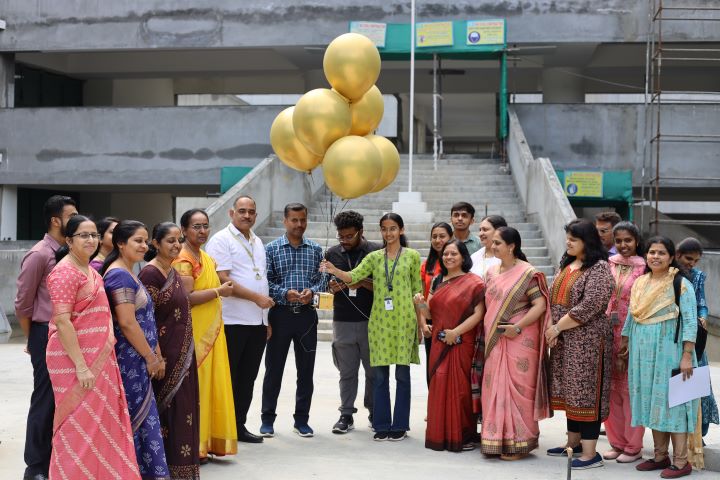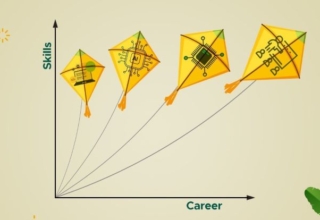
Bengaluru-based RV University’s School of Computer Science and Engineering (SoCSE) hosted its inaugural semester-end exhibition, “Ingenuity: The Exhibition for Engineering Explorations and Exploring Science,” on May 15-16, 2024. The exhibition highlighted the outcomes of student learnings in the innovative “Engineering Exploration” course, which was launched in February this year. The event served as a platform for students to showcase their ingenuity and creativity under the guidance of dedicated faculty members.
The Engineering part was supplemented with the exploring science course which focussed on learning about the science aspects of these projects. With a thrust on hands-on experiences and practical applications, the course and the exhibition are designed to enhance the educational journey of budding engineers at RV University.
The “Engineering Exploration” course was conceived to bridge the gap between theoretical knowledge and real-world engineering applications. It provided students with a solid foundation in the Internet of Things (IoT), a rapidly growing field that connects everyday devices to the internet. The exhibition’s inaugural ceremony, held on May 15, was graced by the presence of Dr. Y.S.R. Murthy, Vice-Chancellor, RV University; Dr. Sahana D Gowda, Registrar; and Dr. G. Shobha, Dean of the School of Computer Science and Engineering.
The “Ingenuity” exhibition featured an impressive array of student-led projects spanning a wide range of fields such as assistive technology, computer vision, energy management, healthcare, home automation, intelligent transportation, robotics, smart cities, smart agriculture, space technology, and industrial automation. The exhibition not only demonstrated the technical skills acquired by students but also their ability to apply these skills to solve real-world problems.
The Vice-Chancellor praised the students’ innovative spirit and highlighted the importance of hands-on learning in engineering education. He emphasized the university’s commitment to providing students with the resources and opportunities they need to succeed in their chosen fields.
“I am deeply impressed by the achievements showcased at this exhibition, particularly the assistive technologies developed for persons with disabilities. It’s a testament to the ingenuity and compassion of our students and faculty. We must continue to prioritize inclusivity, designing technologies and infrastructure that are accessible to everyone, ensuring full participation in society. I encourage all our students to maintain their curiosity and continue innovating, even after graduation. The funding initiatives supporting this exhibition are commendable and will undoubtedly fuel further advancements in this critical field,” Dr. Y. S. R. Murthy added while speaking at the inaugural ceremony.
Dr. G. Shobha, Dean, School of Computer Science and Engineering, commended the faculty and mentors for their dedication and guidance. She noted that the exhibition was not only a showcase of student achievements but also a reflection of the university’s commitment to nurturing the next generation of leaders.
Some standout projects included:
- Weather Balloon:Students created a small payload with various sensors like temperature, altitude, air-quality monitoring sensors which was flown to a height of 200 feet using helium balloons. Real-time data was collected from the high altitude to know about the air quality at that level.
- Traffic Light System:This innovative system uses computer vision to determine traffic volume and adjusts the duration of green lights accordingly, optimizing traffic flow.
- Smart Curtain:This project aims to revolutionize living spaces by creating a window system that responds to environmental changes, seamlessly integrating with smart home platforms, and optimizing energy usage.
- Fire Extinguishing and Navigating Robot:This autonomous or remotely controlled robot uses sensors to detect and extinguish fires, navigating various terrains to minimize risks to human firefighters.
- Silent Sync Glove:This glove translates sign language into spoken words and text, enhancing communication accessibility for the deaf and dumb community.
- Metro Fleet Management System:This autonomous system monitors passenger counts in metro trains and adjusts the train’s movement for efficient boarding and alighting.










